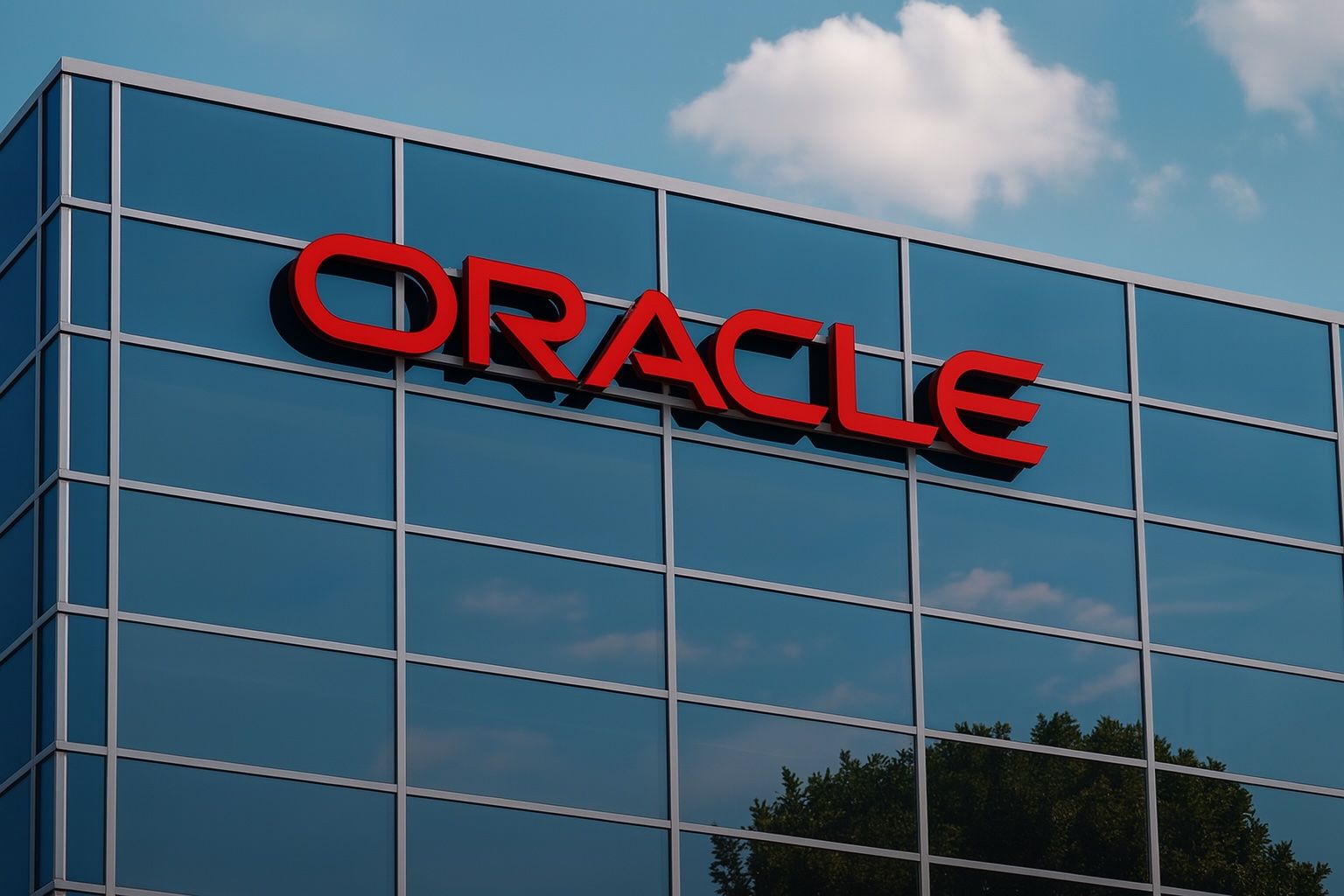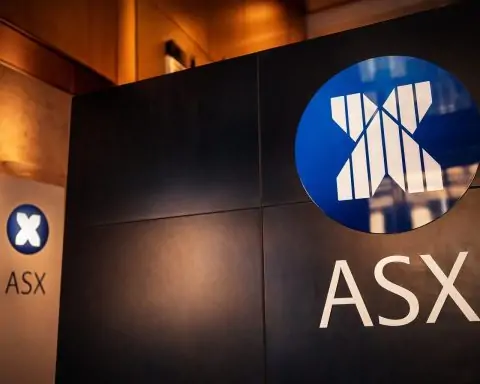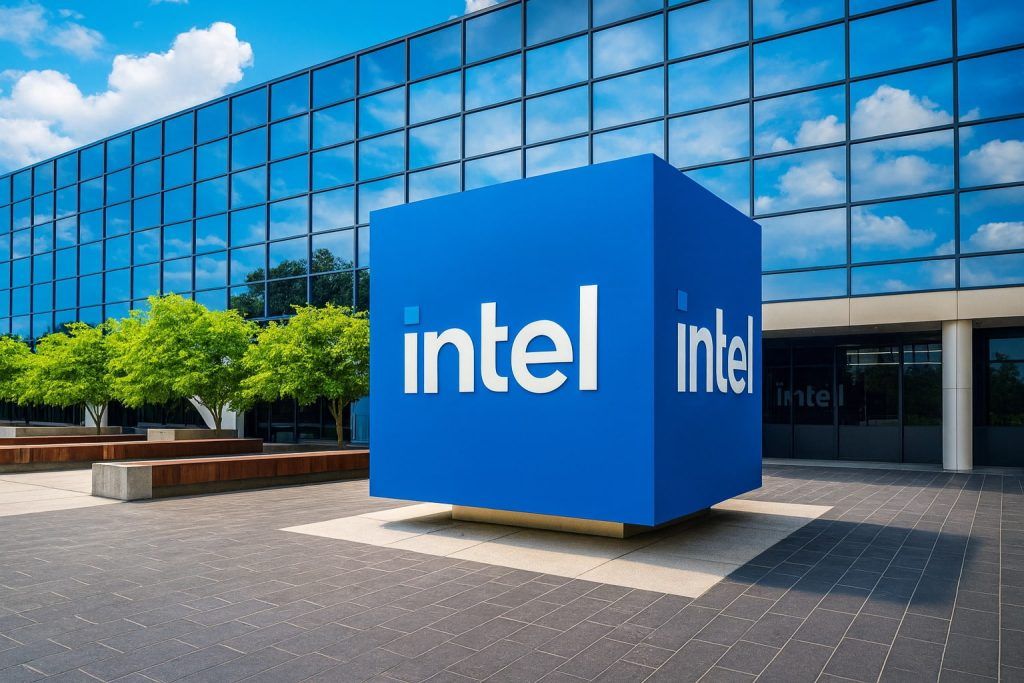Oracle Corporation (NYSE: ORCL) finally caught a bid on Friday, November 14, 2025, snapping part of a bruising AI-driven sell-off that has erased roughly a quarter of its value over the past month. But the modest rebound came against a backdrop of rising concern over Oracle’s debt-fueled artificial intelligence build‑out and sharply divided analyst opinion about where the stock goes next.
Oracle stock price today: key numbers after the close
As of the closing bell on Friday (4:00 p.m. ET):
- Closing price: about $222.9 per share
- Daily move: up roughly 2.4% (about +$5.3) versus Thursday’s close near $217.6 [1]
- Intraday range: traded between roughly $210.8 and $227.1 after opening around $210.8 [2]
- Volume: just under 36 million shares, above recent averages, reflecting heavy institutional activity [3]
- 1‑month performance: still down around 25–30% from October levels, after a slide from record highs near $340–345 in early September to the low‑$220s today [4]
- 52‑week range: approximately $118.9 to $345.7 [5]
- 12‑month change: despite the recent crash, shares remain up about 18% over the past year [6]
In other words, today’s bounce was a relief rally, not a full trend reversal. ORCL is still trading far below its early‑September peak and remains one of the hardest‑hit mega‑cap tech names in the recent AI correction. [7]
Why did Oracle stock move today?
1. Debt and bond market jitters around Oracle’s AI spending
The most important new headline on Friday came from Reuters, which reported that Oracle’s corporate bonds have sold off after a report that the company plans to take on about $38 billion in additional debt to fund its AI infrastructure build‑out. [8]
Key points from that report:
- Oracle already carries roughly $104 billion of total debt, including about $18 billion in bonds. [9]
- The firm is spending more than it currently generates from operations, largely to finance massive AI and cloud data center expansion for customers including OpenAI, the Sam Altman–backed startup. [10]
- Prices of Oracle’s 4.9% 2033 bonds have dropped, pushing yields several basis points higher, while a newer 4.8% 2032 issue has also seen yields climb. [11]
The Economic Times and other outlets have amplified those concerns, describing Oracle’s “debt mountain” and citing estimates that the company’s free cash flow has turned sharply negative as AI capex surges. Some coverage suggests Oracle could ultimately add tens of billions more in borrowing on top of its existing load, with debt‑to‑equity ratios above 500% on certain measures. [12]
The Financial Times has gone further, highlighting that:
- Oracle’s shares have fallen around 25% in a month, worse than any other major U.S. hyperscaler.
- Long‑term debt is already in the mid‑$90 billion range and could rise toward $290 billion by 2028 under some projections if current build‑out plans continue. [13]
Bond investors, in short, are starting to ask a blunt question:
Can Oracle’s AI gamble realistically generate enough high‑margin cash flow to justify a balance sheet this leveraged? [14]
Today’s share price rebound suggests equity traders were willing to buy a little of that risk—at least for a day—even as credit markets turned more cautious.
2. Analysts are sharply split: from “irresponsible” AI bet to 80% upside
Friday’s tape action also reflected a tug‑of‑war on Wall Street over how to interpret Oracle’s AI strategy.
The bull case: Mizuho and other brokers see huge upside
A widely circulated Barchart column highlighted that Oracle shares are down more than 30% from their one‑month high, yet Mizuho Securities remains aggressively bullish. [15]
According to that report:
- Analyst Siti Panigrahi reiterated an “Outperform” rating on Oracle.
- Mizuho raised its price target from $350 to $400, implying roughly 80–90% upside from current levels. [16]
- The bullish thesis centers on four drivers:
- AI infrastructure monetization (Oracle’s GPU‑rich cloud capacity)
- Rapidly expanding multi‑cloud partnerships
- Migration to the new Database 26ai
- Growth in Fusion applications infused with AI [17]
The same article notes that other brokers also maintain high targets—some as lofty as $430—with firms like Stifel, Evercore and Barclays all rating ORCL “Buy” or “Outperform” with targets in the mid‑$300s to $400 range. [18]
The cautious and bearish side: “irresponsible” and low‑margin AI economics
On the other side of the debate, several voices turned more skeptical this week:
- Erste Group downgraded Oracle from Buy to Hold on November 10, flagging sharply rising non‑current liabilities, declining return on assets and the risk that heavy cloud investments will pressure free cash flow and operating margins for years. [19]
- A widely shared Benzinga piece quoted a prominent tech analyst calling Oracle’s AI push “bad behavior” and an “irresponsible investment,” contrasting it with what he described as more “healthy,” customer‑driven AI demand at Microsoft and Google. He argued that Oracle’s AI infrastructure business so far looks like “a bad business with very low margins.” [20]
- Quantitative work cited by Money Morning and the Economic Times suggests Oracle’s AI cloud unit may currently be earning gross margins of only around 14%, far below levels at Amazon Web Services and Microsoft Azure, despite huge capital intensity. [21]
A Barchart analysis estimated that one Nvidia‑linked AI cloud segment generated around $900 million in quarterly revenue but only about $125 million in gross profit, a slim margin given the scale of investment. [22]
In this view, Oracle is effectively renting out extremely expensive AI infrastructure at relatively low spreads, while borrowing heavily to finance the build‑out—a risky combination if AI demand or pricing power disappoints.
3. “AI bubble” chatter and the broader tech sell‑off
Oracle’s slump has also been pulled into a much larger story: whether Wall Street is living through an AI bubble.
News aggregators and analyst roundups on Friday highlighted:
- Commentators like Michael Burry and other high‑profile investors warning about a potential “big short”–style unwind across richly valued AI names, including ORCL. [23]
- Coverage in Fortune, TheStreet and other outlets questioning whether the enormous amounts of debt and capex pouring into AI infrastructure across Big Tech are sustainable. [24]
The Financial Times piece on Oracle’s “huge AI bet” framed the company as ground zero for these concerns: heavy reliance on a single start‑up partner (OpenAI), large negative free cash flow, and long‑term infrastructure commitments that outstrip the length of many customer contracts. [25]
Today’s 2%+ bounce in ORCL came as broader indexes finished the week mixed, with earlier weakness in mega‑cap tech partially reversing into the close. But the backdrop remains fragile, and Oracle is now one of the poster children in the debate over whether the AI boom has overshot in the near term. [26]
Fundamental news specific to Oracle on November 14
Amid all the noise about debt and AI bubbles, Oracle did deliver concrete business news on Friday that reinforces the long‑term adoption story.
Oracle Health wins a rural hospital client with AI clinical agent
In a press release, Marshall Browning Hospital, a 25‑bed critical access hospital in rural Illinois, announced it will replace its legacy electronic health record (EHR) with Oracle Health CommunityWorks and adopt Oracle Health Clinical AI Agent. [27]
From that announcement:
- MBH will deploy a single integrated EHR across one hospital, one rehab center and three clinics, replacing fragmented systems.
- Oracle’s AI‑powered clinical agent will automatically draft structured visit notes from physician‑patient interactions so doctors can review and approve instead of typing everything manually.
- The system will also automate billing and claims and provide near real‑time financial reporting, aiming to strengthen the hospital’s revenue cycle and long‑term financial stability. [28]
While the deal is small in dollar terms for a company the size of Oracle, it showcases two important themes:
- Vertical expansion into healthcare, especially among smaller rural systems that need turnkey cloud/EHR solutions.
- Practical, workflow‑oriented AI use cases—in this case, documentation and billing—that can deliver clear productivity gains without the hype of frontier model training.
Oracle AI Database 26ai and AI Lakehouse push the product story forward
Separately, Cloud Wars published a detailed feature on Oracle AI Database 26ai, a re‑branded and heavily upgraded version of Oracle Database infused with “hundreds” of embedded AI capabilities. [29]
Highlights from that analysis:
- Oracle has effectively renamed Oracle Database as an “AI Database,” reflecting how deeply AI is now built into the engine.
- The new platform supports natural‑language querying, translating plain English into SQL so non‑technical users can interact with data without understanding database syntax.
- Oracle also launched an Autonomous AI Lakehouse that uses the Apache Iceberg table format to unify data across lakes and warehouses, with built‑in AI for data discovery and integration.
- Crucially, Oracle is emphasizing data privacy and access control at the database layer, enforcing rules about who—or which AI agents—can see what information.
- The AI database and lakehouse can be deployed on‑premises, in Oracle Cloud Infrastructure, or in other major clouds like AWS, Azure and Google Cloud, supporting the company’s multicloud strategy. [30]
This product news underpins the bullish argument that Oracle is not just an AI infrastructure landlord but also a core data and application platform provider in the AI era.
How battered is Oracle after the AI sell‑off?
The recent downdraft has been severe:
- One‑month performance: down roughly 25–30%, far worse than most mega‑cap peers. [31]
- From peak: shares have dropped from record highs near $345 in early September to the low‑$220s, erasing well over $150 billion in market value. [32]
- Yet 12‑month performance: still up about 18%, reflecting how explosive the earlier AI rally was. [33]
At the same time, Oracle’s underlying AI and cloud metrics remain eye‑popping:
- Earlier this year, management disclosed that its backlog of contracted work—largely driven by AI and cloud—more than tripled to about $455 billion, including the headline‑grabbing “Stargate” AI infrastructure contract with OpenAI, valued around $30 billion. [34]
- Oracle reported remaining performance obligations (RPO) up 359%, giving investors unusual visibility into multi‑year revenue. [35]
But the core problem is profitability and funding:
- AI infrastructure margins are currently estimated around 14–16%, versus far higher margins in more mature cloud businesses. [36]
- Oracle has signaled it doesn’t expect AI infrastructure margins to approach 30–40% until around 2030, implying years of heavy investment before returns normalize. [37]
- With over $100 billion of debt already on the balance sheet and talk of another $38 billion (or more) in new borrowings, the company is effectively leveraging its future cash flows on the assumption that the AI supercycle will deliver. [38]
It’s this tension—huge contracted demand vs. thin near‑term margins and very high leverage—that explains why Oracle can rally 2% in a day yet still trade like a high‑beta AI proxy rather than a stable software blue chip.
What are other institutions saying about Oracle now?
Recent hedge‑fund and institutional commentary adds more color:
- An Aristotle Atlantic Partners investor letter praised Oracle’s “transformative growth” in cloud infrastructure, citing multi‑billion‑dollar AI deals and 359% RPO growth as key drivers of earlier outperformance. Yet the same letter noted the stock’s one‑month return of ‑25%, underscoring the volatility. [39]
- Zacks and other research shops have published notes describing how Oracle has recently underperformed the broader market, even as its AI narrative remains intact, reflecting investor worries over execution risk and capital intensity. [40]
- Money Morning’s quantitative analysis suggests that, based on historical patterns since 2019, Oracle’s 10‑week forward price distribution now clusters around $220, implying a wide but central trading band rather than a straight‑line recovery. [41]
Meanwhile, algorithmic and sentiment‑driven services like CoinCodex still forecast low‑single‑digit percentage upside for ORCL into December based on technical signals, even while classifying current sentiment as “bearish” and volatility elevated. [42]
Key dates and catalysts to watch
Investors tracking Oracle after today’s move should keep an eye on:
- November 18, 2025 – Annual General Meeting (AGM)
- Expect questions around the scale and structure of AI capex, debt issuance plans, and contract duration versus lease commitments. [43]
- Mid‑December 2025 – Projected Q2 FY 2026 earnings release (December 14)
- Street will focus on:
- Updated figures for AI and cloud RPO
- Any change to AI infrastructure margin guidance
- Progress in multicloud database deployments and early traction for Database 26ai
- Free cash flow trends versus the latest debt headlines [44]
- Street will focus on:
- Credit rating actions and bond spreads
- With Reuters already flagging bond‑market weakness, any rating changes or outlook revisions from agencies could quickly feed back into the equity story. [45]
Is Oracle stock a buy after today’s bounce?
Whether ORCL is attractive at around $223 depends heavily on your risk profile and time horizon.
The bullish case:
- Massive, contractually backed AI and cloud demand (RPO up 359%; $455B backlog). [46]
- A rapidly evolving AI database and data‑platform story (Database 26ai, AI Lakehouse, multicloud distribution). [47]
- Ongoing customer wins like Marshall Browning Hospital that showcase practical AI adoption in high‑value verticals. [48]
- Several major brokers modeling 50–90% upside over a multi‑year horizon if Oracle hits its aggressive AI growth and margin targets. [49]
The risk case:
- Very high leverage, with more debt likely on the way to fund data centers and GPUs. [50]
- Sub‑scale AI margins today and no guarantee Oracle can lift them fast enough to justify the capital. [51]
- Heavy reliance on a small number of hyperscale AI partners, notably OpenAI, in a space where economics and winners are still fluid. [52]
- Growing chorus of analysts and investors warning that parts of the AI trade—Oracle included—may have become speculative and bubble‑like in the short term. [53]
For short‑term traders, that mix likely means continued volatility around headlines on AI demand, bond yields, and any new debt offerings.
For long‑term, high‑risk‑tolerant investors, Oracle increasingly looks like a high‑beta AI infrastructure and data platform play: potentially powerful upside if management successfully converts today’s capex into high‑margin recurring revenue—but with balance‑sheet and execution risks that are now impossible to ignore.
Final note
This article is for informational and educational purposes only and does not constitute financial or investment advice. Always do your own research and consider speaking with a qualified financial advisor before making any investment decisions regarding Oracle stock or any other security.
References
1. chartexchange.com, 2. stockanalysis.com, 3. chartexchange.com, 4. www.barchart.com, 5. www.investing.com, 6. www.insidermonkey.com, 7. www.ft.com, 8. www.reuters.com, 9. www.reuters.com, 10. www.reuters.com, 11. www.reuters.com, 12. m.economictimes.com, 13. www.ft.com, 14. www.reuters.com, 15. www.barchart.com, 16. www.barchart.com, 17. www.barchart.com, 18. www.barchart.com, 19. www.insidermonkey.com, 20. www.benzinga.com, 21. moneymorning.com, 22. www.barchart.com, 23. www.finanznachrichten.de, 24. finviz.com, 25. www.ft.com, 26. www.reuters.com, 27. www.stocktitan.net, 28. www.stocktitan.net, 29. cloudwars.com, 30. cloudwars.com, 31. www.ft.com, 32. m.economictimes.com, 33. www.insidermonkey.com, 34. www.insidermonkey.com, 35. www.insidermonkey.com, 36. www.barchart.com, 37. www.barchart.com, 38. www.reuters.com, 39. www.insidermonkey.com, 40. www.zacks.com, 41. moneymorning.com, 42. coincodex.com, 43. ca.marketscreener.com, 44. ca.marketscreener.com, 45. www.reuters.com, 46. www.insidermonkey.com, 47. cloudwars.com, 48. www.stocktitan.net, 49. www.barchart.com, 50. www.reuters.com, 51. www.barchart.com, 52. www.ft.com, 53. www.benzinga.com







